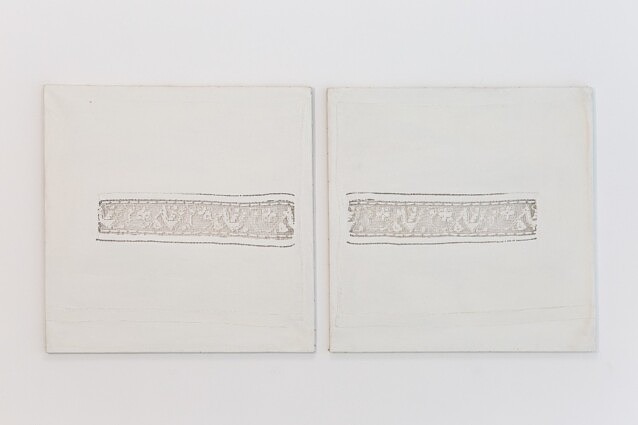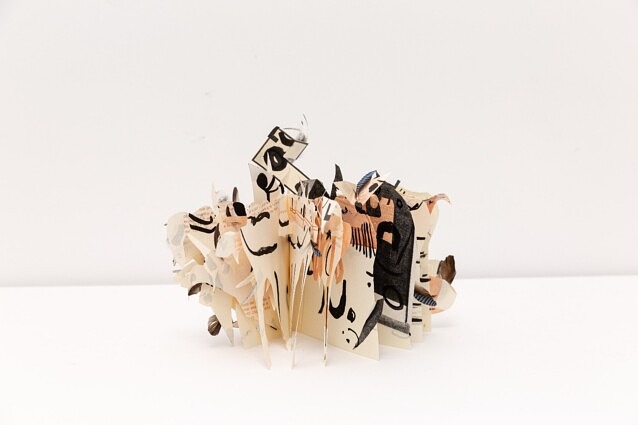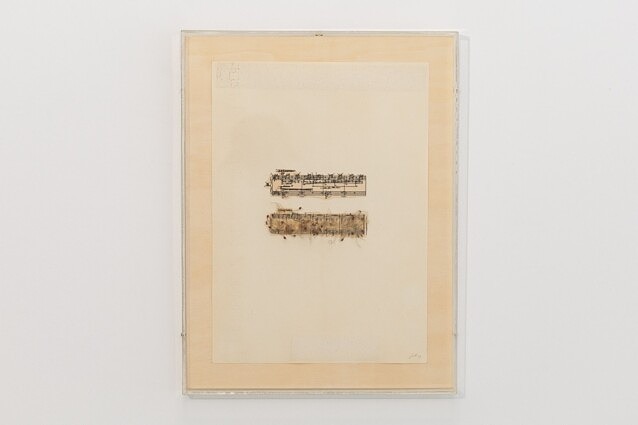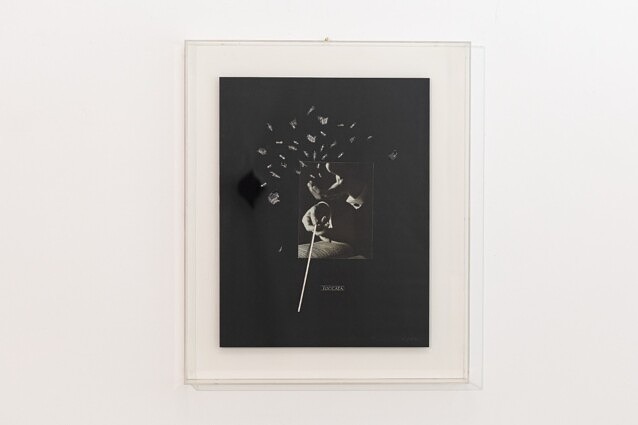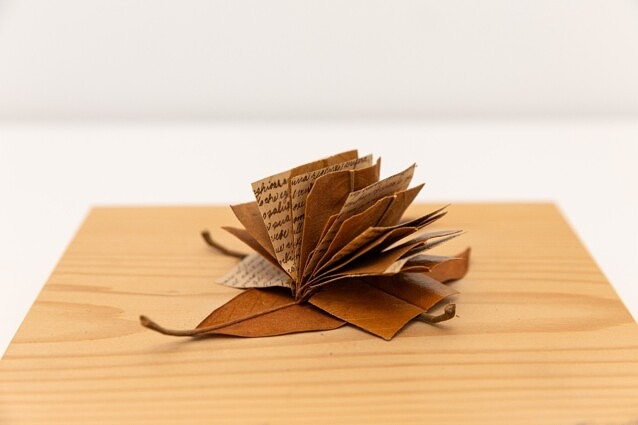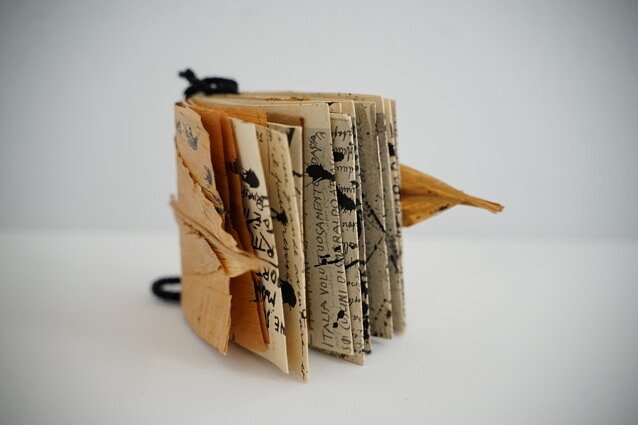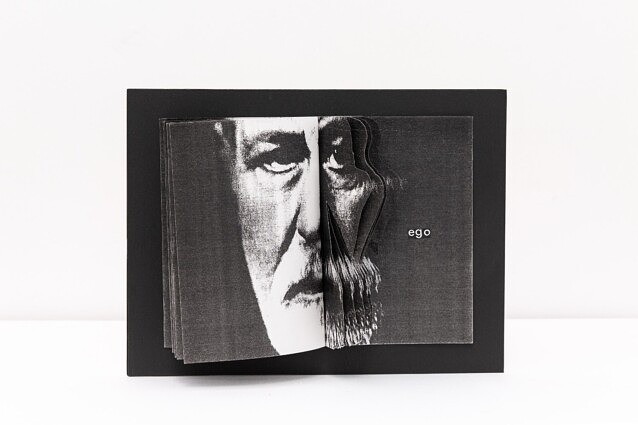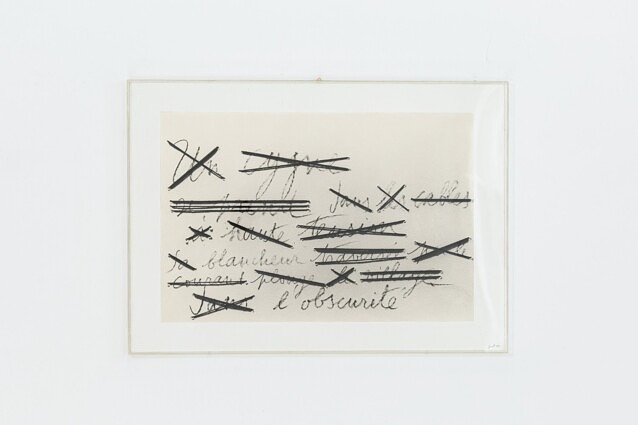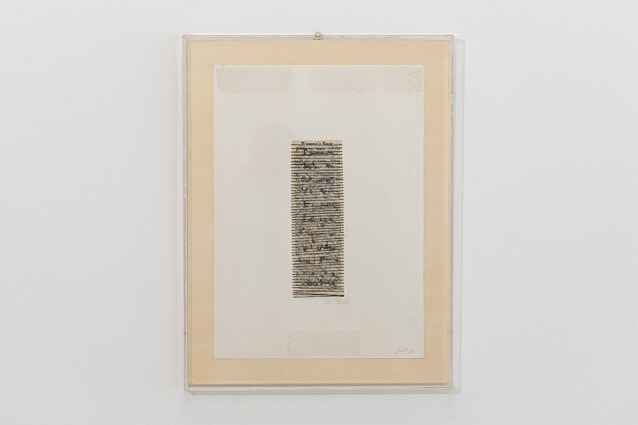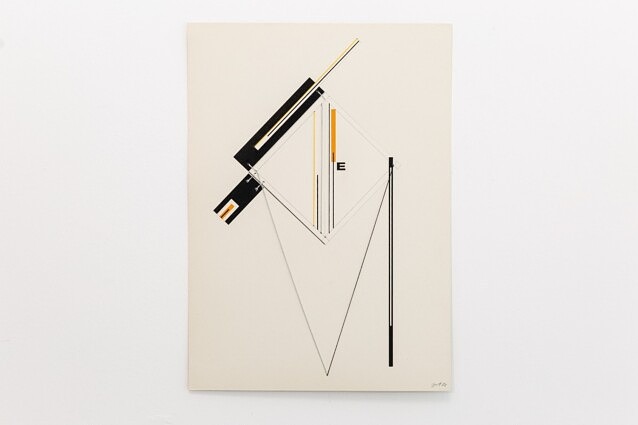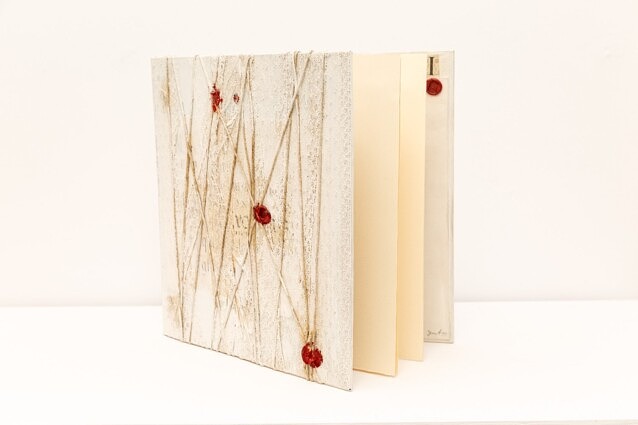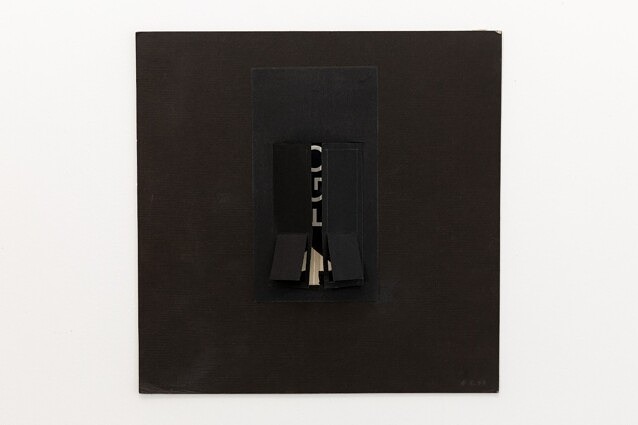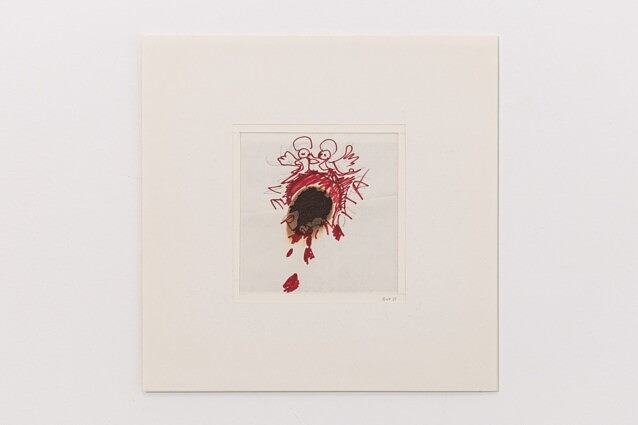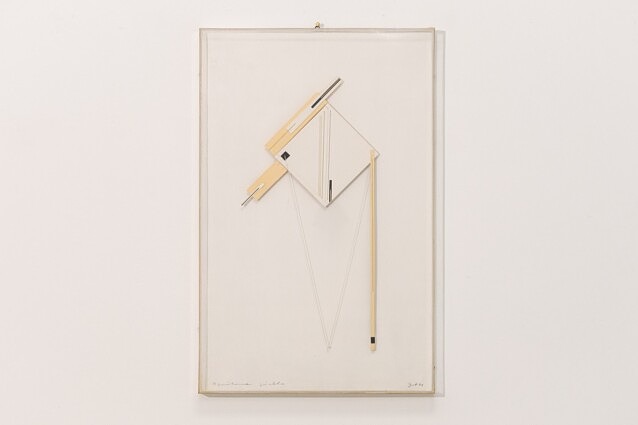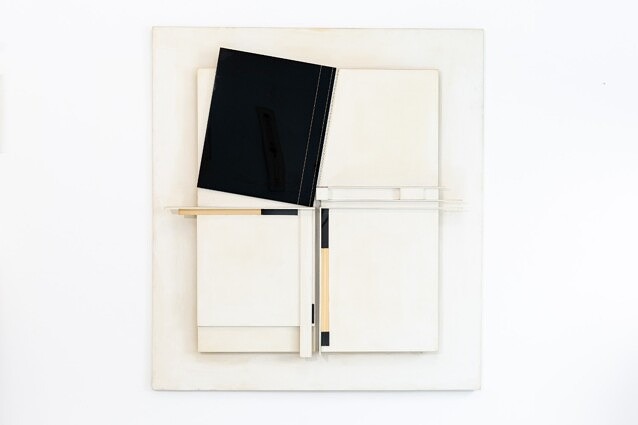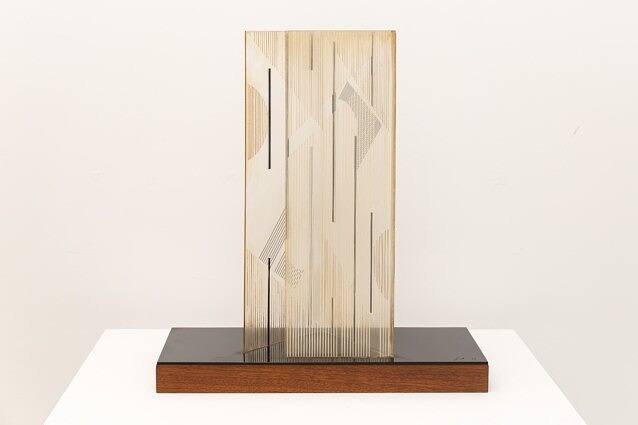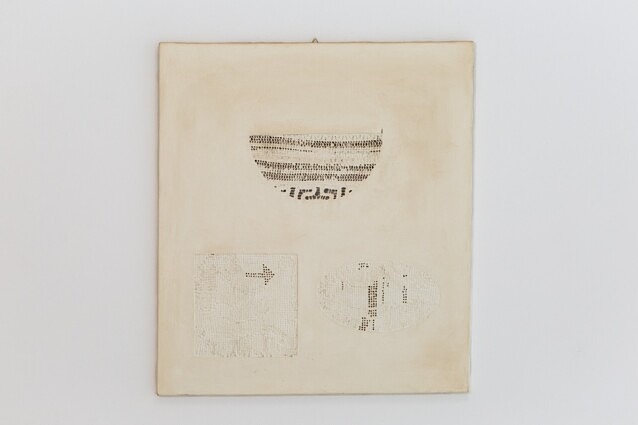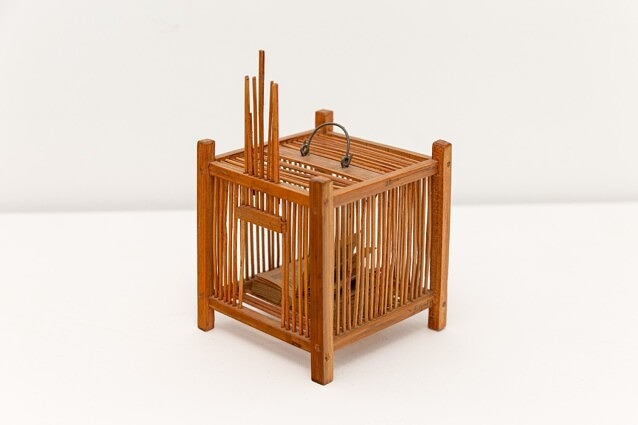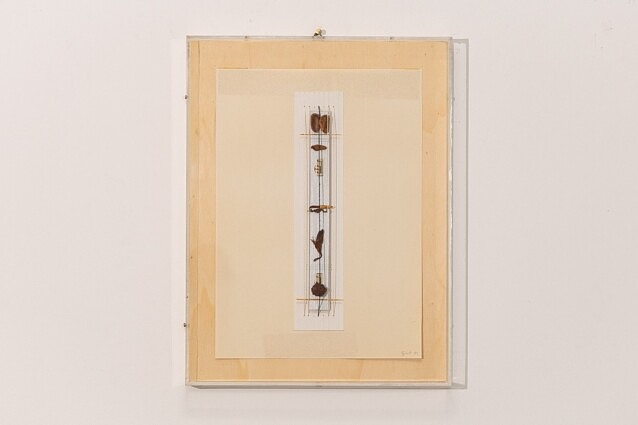Elisabetta
Gut
Biography
After a first experience with painting, of post-cubist imprint at the beginning and then informal, the Swiss Italian artist experimented the relations between picture, writing, and natural elements, developing collages and assemblages that fit in visual poetry research.
Handwritten sheets bounded with cotton thread and leaves, music scores positioned within seeds, books in cages or cages of books, her works have been exhibited in important exhibitions such as: Materializzazione del linguaggio (Venice Biennale, 1978); Arte come scrittura (Quadriennale in Rome, 1986); Fotoidea (San Paolo Biennale, 1994); Post scriptum. Artiste in Italia tra linguaggio e immagine negli anni ’60 e ’70 (Donna di Ferrara Biennale, 1998). Her works are part of the permanent collection at MUSEION of Bolzano, MUSINF of Senigallia, MART of Trento and Rovereto, Centro Pecci of Prato, MA*GA of Gallarate, MRAG of Maitland and NMWA of Washington.
From 1956 she held over 30 solo shows in Italian and foreign galleries and museums, in 2019 at the Cortese & Lisanti Gallery in Rome, Museum of Abruzzo’s People in Pescara, the National Museum Women in the Arts of Washington and at the Maitland Regional Art Gallery of Maitland (Australia)
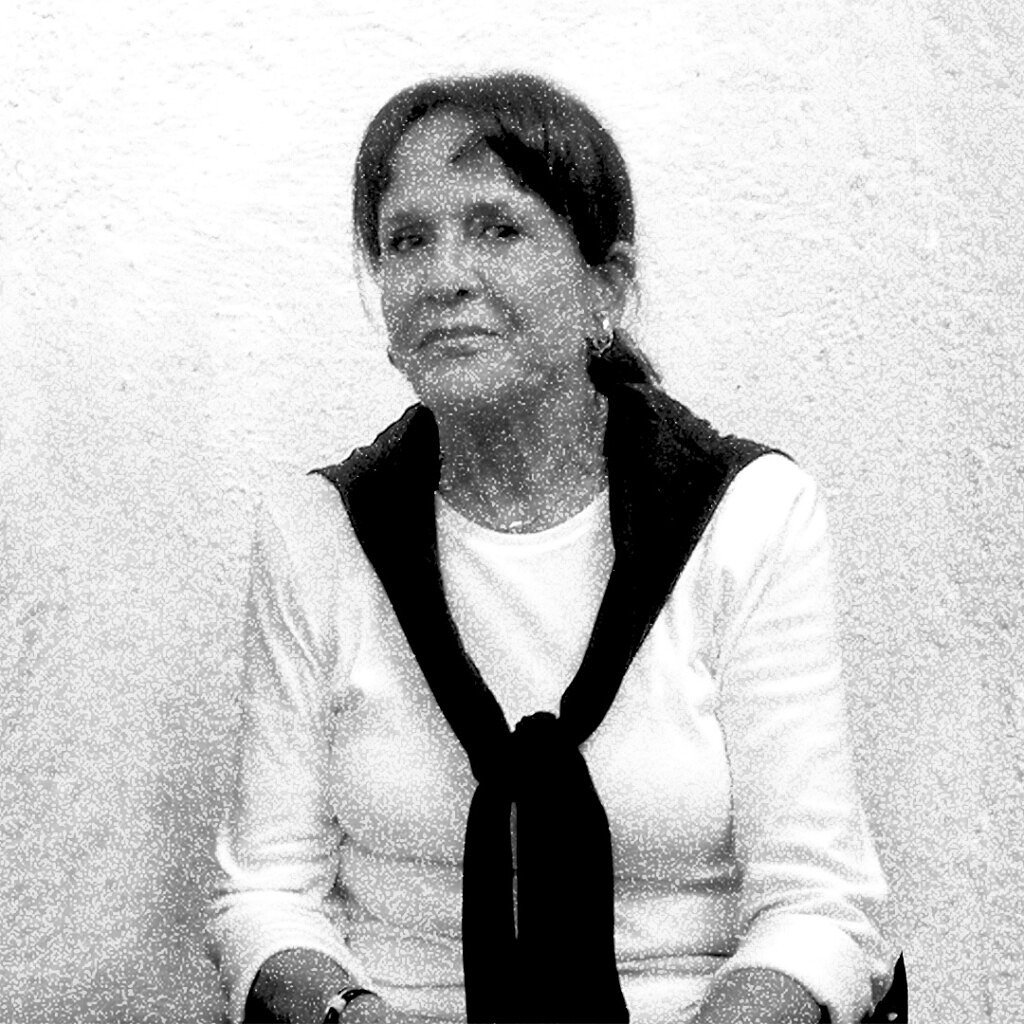
Critical Text
“So the artist has reached her present maturity through an operational process which has been an uninterrupted enrichment: polymaterial, optical researches, visual poetry, up to the aim of this mixed technique, which is able to connect what is distant, in a continual discovery of similarities: the branch and archaic writing, the flower and oriental writing, the vegetal shell and the cover of a book, the thread and the sign, the lace and the ideogram; here too upsetting the planes of experience and putting nature and culture on the same levels.
So the sign-tangle of her pictorial past has become the ‘dishevelledness’ of her cut books, an objectualized tangle, a volumetric cancellation obtained by scissors. And the embroidery, which thirty years ago she inserted in canvas, revisiting Fontana’s cut in order to sublimate in values of light the anonymous feminine contribution, can be found in the Arabic and Chinese writings which her hands now cut out and immerge in aquariums of luminous void. Everything can come into this cycle of implicit metaphors and show the resemblance of the created world to the instruments of knowledge and harmony. As the names of poets form feathers, so the seeds separate threads for imaginary musical instruments, guides for an interior listening.
For this artist negation and affermation are identified. She was the first to use thread as signs of cancellation and of musical writing; pentagrams and strings for inaudible vibrations. And it’s precisely her moroseness that guarantees her intensity. The difficult things, in operation in which, like this, resume an iconography widely connoted as poetical, is the ability to remove it from every prearranged poeticism, in order to reacquire a native freshness inside the very structures of culture. So the Plume de Poète (a Poet’s Plume) is also a Plume d’Artiste (an Artist’s Plume), a tool, no longer literary, of global communication, a threefold sign of nature, writing, and levity”
_Mirella Bentivoglio
